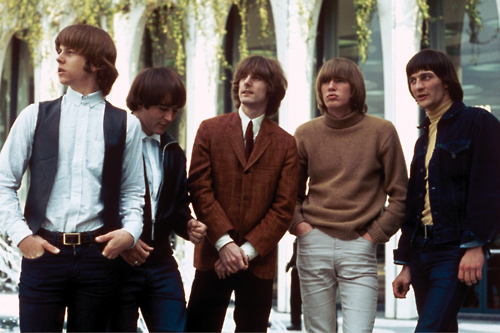Eight Miles High – The Byrds
- music
- July 2, 2024

“Eight Miles High” by The Byrds is a pioneering song that embodies the essence of 1960s psychedelic rock and its cultural impact. Released in 1966, this track is celebrated for its innovative musical composition, intricate vocal harmonies, and its role in shaping the psychedelic rock genre. This essay explores the musical experimentation, lyrical themes, cultural significance, and enduring legacy of “Eight Miles High.”

The musical composition of “Eight Miles High” is marked by its experimental and avant-garde approach. The song opens with a distinctive guitar riff played by Roger McGuinn, accompanied by a hypnotic bassline and intricate drum patterns. The use of the 12-string Rickenbacker guitar creates a shimmering and ethereal sound that is characteristic of The Byrds’ style. The instrumental breaks, featuring improvised guitar solos and Eastern-influenced scales, contribute to the song’s psychedelic atmosphere and sense of sonic exploration.
One of the defining features of “Eight Miles High” is its complex vocal harmonies. The Byrds’ trademark three-part harmonies, sung by Roger McGuinn, David Crosby, and Gene Clark, create a layered and atmospheric texture that enhances the song’s mystical and introspective qualities. The interplay between the vocal lines and instrumental sections showcases the band’s musical prowess and their ability to push the boundaries of conventional rock music.

Lyrically, “Eight Miles High” is a poetic and enigmatic exploration of travel, perception, and inner exploration. The lyrics, penned by Gene Clark and Roger McGuinn, are inspired by the band’s experiences during their first tour of the United Kingdom. The title refers to the cruising altitude of commercial airplanes, symbolizing the band’s journey into new musical and cultural territories. Lines such as “Eight miles high and when you touch down / You’ll find that it’s stranger than known” evoke a sense of surrealism and transcendence, inviting listeners to embark on a psychedelic journey of their own.

The song’s narrative unfolds with a sense of ambiguity and introspection, reflecting the band’s fascination with Eastern philosophy, existentialism, and the countercultural movement of the 1960s. The repetitive structure of the lyrics and the dream-like imagery create a hypnotic and immersive listening experience, drawing listeners into the song’s introspective world.
Culturally, “Eight Miles High” became a landmark song in the development of psychedelic rock and its influence on popular music. The song’s innovative use of instrumental techniques, complex vocal harmonies, and lyrical themes of exploration and introspection inspired countless artists and bands in the psychedelic rock genre. Its release coincided with the burgeoning countercultural movement of the 1960s, making it a symbol of artistic experimentation and cultural rebellion.
The song’s enduring legacy is also evident in its lasting influence on subsequent generations of musicians and songwriters. Its groundbreaking musical composition and lyrical themes have inspired numerous covers and reinterpretations by artists across different genres. “Eight Miles High” continues to be celebrated as a timeless classic that captures the spirit of 1960s counterculture and the transformative power of psychedelic music.
In conclusion, “Eight Miles High” by The Byrds is a groundbreaking song that pushed the boundaries of rock music and paved the way for the psychedelic rock genre. Its innovative musical composition, intricate vocal harmonies, and introspective lyrical themes have solidified its place as a seminal work in popular music history. “Eight Miles High” continues to resonate with listeners, offering a transcendent journey into the realms of musical experimentation and cultural exploration.











